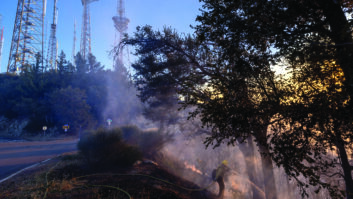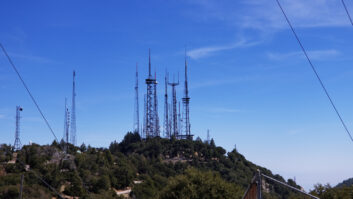WASHINGTON�Comments about the AM Revitalization Order are rolling in to the Federal Communications Commission ahead of the deadline of March 21.
Myriad issues are on the minds of the commenters, including daytime protection issues, the main studio rule and the power of AM radio in general.

Starboard Media Foundation, a licensee of 16 full-power radio stations including 13 AMs, supports relaxation of the commission�s main studio rule, which requires a station�s main studio to be located either within its service contour or within 25 miles of its community oflicense.
In its comment filing, Starboard urged the commission to allow a licensee with multiple stations in a metro to co-locate all such stations in a single location. �The reduced cost savings associated with such a relaxation would be a tremendous boon to all licensees, particularly AM stations,� the company wrote in its filing.
Starboard pointed to the commission�s recently adopted public inspection file rules that will ultimately require all AM and FM stations to post their public files to the commission�s online database.
According to Starboard, the commission�s action has obviated the very need for a station�s offices to be located in the community it serves, because within the next two years, anyone will be able to access any publicly available document pertaining to any radio station in the country through the Internet, the Starboard filing said. �In relaxing the main studio rule, the commission should not have any concerns about losing the station�s local presence,� Starboard wrote.
�Licensees of all broadcast stations should have the same choice that NCE FM stations have: to co-locate all of its stations� main studios in a single office,� Starboard stated. �The public interest would be well-served by any relaxation of the main studio rule.�
Evolution Broadcasting, the owner of WPCF-AM in Panama City Beach, Fla., agrees with a proposal in the FCC�s Notice of Proposed Rulemaking (NPRM) that proposes to revise to the existing rule regarding the locating of cross service fill-in translators to allow AM stations with limited tower options or oddly shaped primary station contours to better service their communities.
Patrick Pfeffer, managing director of WPCF(AM), strongly agrees with this proposed change. �Our station, like so many other low-power Class D stations with odd and jagged contours haven�t been able to benefit much from the existing rule because of its restrictive nature and limiting language concerning an FM translator�s contour in relationship to the primary station�s contour,� he said, pointing to an existing rule that requires that an FM fill-in translator for an AM station be located such that the 60 dB� contour of any such FM translator station must be contained within the lesser of the 2 mV/m daytime contour of the AM station, or within a 25-mile radius centered at the AM transmitter site.
The proposed revision would change that rule to require that the coverage contour (1 mV/m) of an FM translator rebroadcasting an AM radio broadcast station as its primary station must be contained within the greater of either the 2 mV/m daytime contour of the AM station or a 25-mile radius centered at the AM transmitter site.
�This greatly furthers the public interest without impinging on or compromising anybody else�s rights or interests,� Pfeffer said, asking in his filing that the related NPRM proposed rule be adopted or with even more liberal language �to allow AM stations more flexibility as it pertains to contour restrictions, since this will bring more local programming to a greater local audience while allowing the operators to stay competitive and profitable.�
Local radio listeners have also chimed in via the FCC�s Electronic Comment Filing System, particularly on daytime and nighttime power issues.
Brian Douglas, a listener from Elk Mound, Wis., expressed support of the proposal to allow local AM stations to increase their power during the day or night. �My local station, WRDN, is the only station that is providing me with the necessary farm news and markets,� he told the FCC. �It is very frustrating not be able to listen to WRDN during the early morning hours or during the evening because the station has to lower power for a station over 700 miles away. I�m a young farmer who relies on AM radio.�
�That requirement to �power down� happens during a time that�s crucial for local communities facing hazardous weather or when evening meetings, local sports or other activities are typically underway,� said Janet Adkison of Houston, Mo. �That limits the window of opportunity for the station to grow and limits the service available to the local residents. There is room on the table for all levels of broadcasting.��The doors must be open so that smaller, local or independent programmers aren�t squeezed out by others who tend to forget there are people living and working hours away from metro markets and Interstate highways.� �
Comments are being accepted via the ECFS database. Use proceeding number 13-249.







